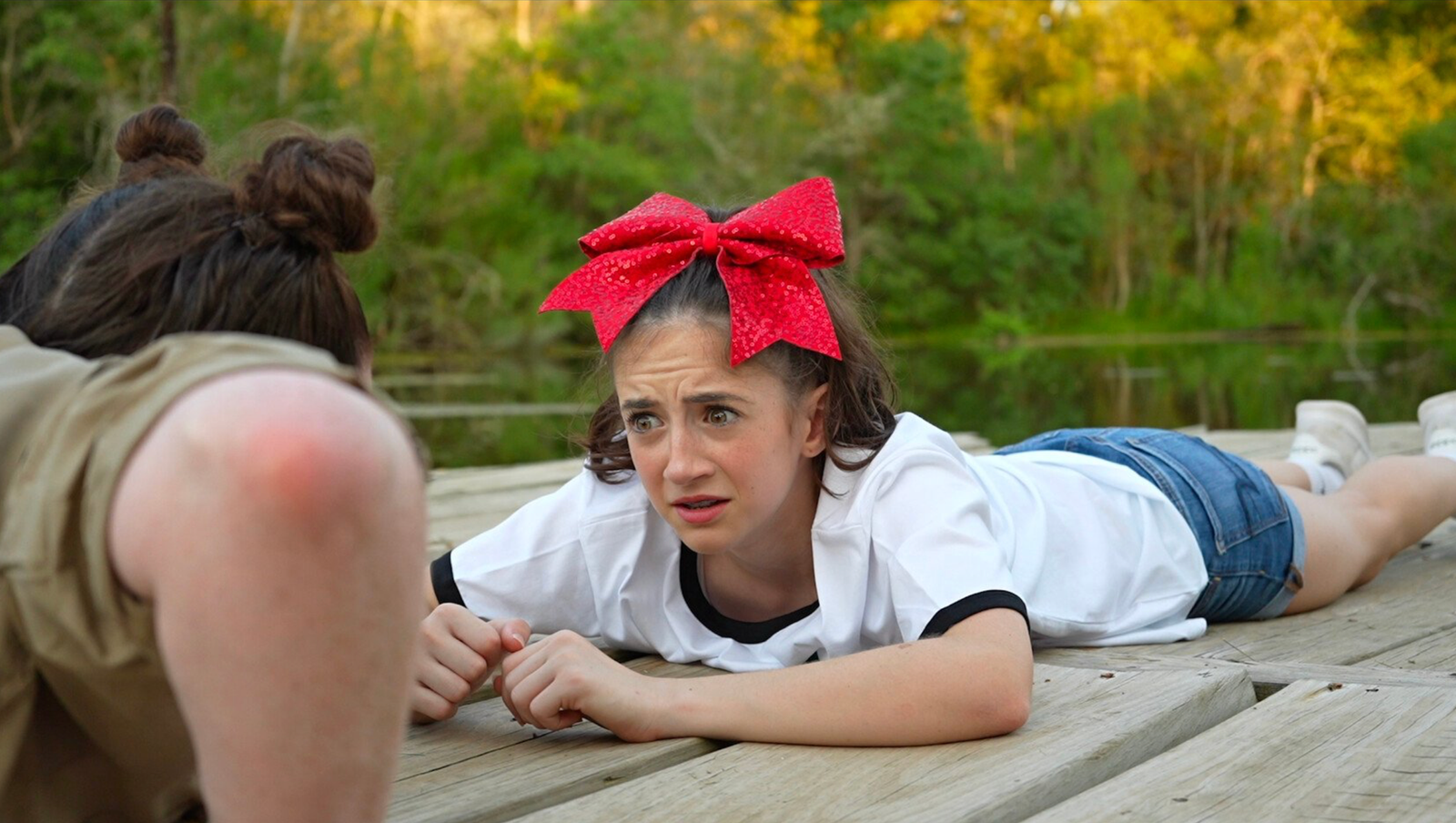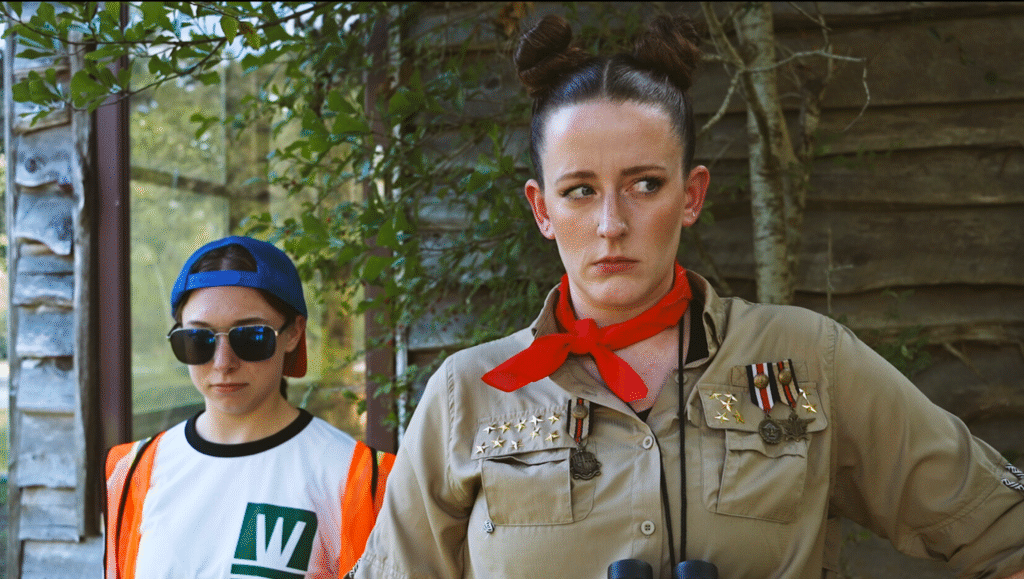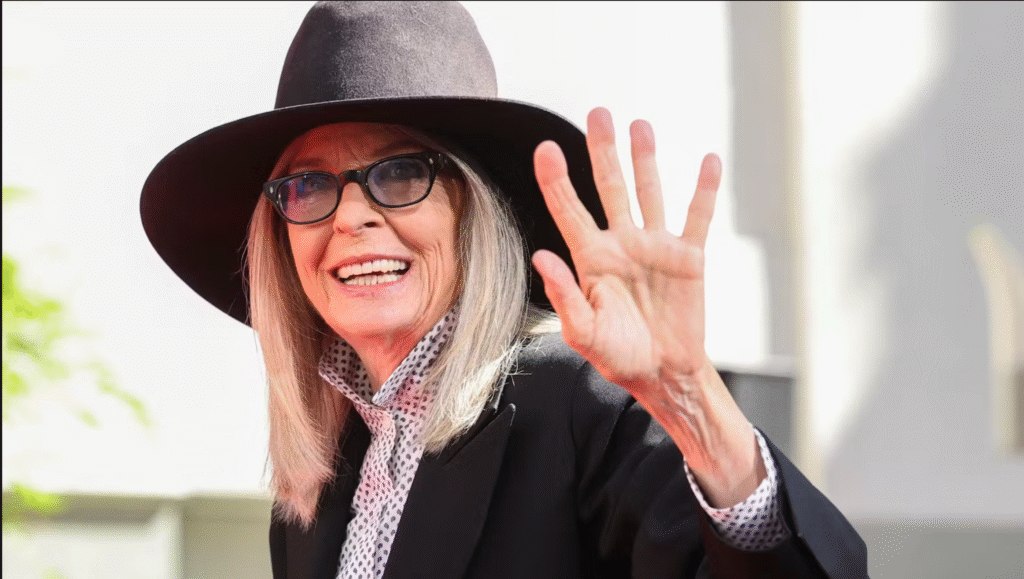Entertainment
Dan + Shay Narrowly Avoided Disbanding After Hitting Friendship Low on August 4, 2023 at 3:43 pm Us Weekly

Dan Smyers and Shay Mooney of Dan + Shay at the 2022 Billboard Music Awards. Image Press Agency/NurPhoto/Shutterstock
After making music together for a decade, Dan Smyers and Shay Mooney were nearly ready to give it all up — until they turned a corner in their friendship.
“When we stopped trying to force things, Dan and I got together and really [decided to rekindle] this friendship,” Mooney, 31, told Zane Lowe during a Friday, August 4, interview with Smyers, 35, on Apple Music 1. “And we decided, ‘Let’s get together two, three times a week and just hang out.’ And that really started the beginning of this album process, without us really meaning to. We started getting together at Dan’s house or one of our buddies’ houses, and sitting down with an acoustic guitar and started writing songs.”
Dan + Shay are set to release their latest (and self-proclaimed “best”) album, Bigger Houses, next month. The record features plenty of songs that accurately depict their friendship journey.
“You can feel the closeness of our relationship, I think, through every little fiber of what that song became, and I think this is the first time an entire record has truly felt like this is who we are as people and this is where we’re at in our lives, but this is also where we want to go,” Mooney added on Friday. “I feel like we believed every word that we were singing. We’ve either been through it or going through it right now, and I just think that that came out through the recording process and the writing process. It just felt kind of meant to be.”
The Grammy-winning group previously revealed in a YouTube video in July that they nearly disbanded after not speaking for four months. “I was in the lowest low of my entire life,” Smyers recalled at the time. “Came off the road and I was like, ‘Man, I f—king hate music. I’m ready to quit.’”
Smyers and Mooney further reflected on their mindset, explaining on Friday that writing their new song “Always Gonna Be” changed everything.
“After 10 years of being a band, things kind of happened,” Smyers said. “After our arena tour, the highest high of our entire lives, I feel like we were in the lowest personal place and our relationship wasn’t as strong as it had been, and it was just because being in a duo is tough. It’s like a marriage. If you don’t go out of your way to foster that relationship, foster the growth, life can get in the way and you can grow apart.”
While he noted that the pair were not “enemies,” they were not spending “enough” quality time as friends after touring commitments ended. “We sat down one night, we weren’t sure, honestly, full transparency, if we were going to be a band anymore,” Smyers recalled. “We aired everything out.”
Dan Smyers and Shay Mooney of Dan + Shay perform outside Rockefeller Center in New York on December 2, 2020. ASON SZENES/EPA-EFE/Shutterstock
He added: “We were just like, ‘Look man, our music has meant a lot to a lot of people. No matter what happens… if we decide this is going to be our last tour, or if this is going to be the beginning of a new chapter and we’re going to just keep raising the bar, keep doing the thing, we got to get ourselves right. We owe that to ourselves. We owe that to our fans.’”
Mooney chimed in, noting that the duo had to prioritize open lines of communication and learn to “really appreciate” the band’s successes.
“Communication is the biggest thing. That is something that… right now, we’re in lockstep [about],” Smyers replied. “And that’s something that we learned, it can go away. If you’re not focusing on it, if you’re not going out of your way to communicate, be open with each other, everything’s out, put it on the table, things can [end and] we can go our separate ways.”
He continued: “Communication is key [for us] to keep this thing going and make it infinitely sustainable to allow us to make the best records we possibly can and do our fans right. Just communicating, being open with each other, talking, hanging out, being the best friends that we are, and remembering that. Not taking it for granted, not taking each other for granted. Because man, this truly is a dream to get to sit with my best friend in the world, make music, travel around and see places we’ve never been before. It’s truly incredible.”
After making music together for a decade, Dan Smyers and Shay Mooney were nearly ready to give it all up — until they turned a corner in their friendship. “When we stopped trying to force things, Dan and I got together and really [decided to rekindle] this friendship,” Mooney, 31, told Zane Lowe during a
Us Weekly Read More
Entertainment
California Bans AI Clones from Replacing Real Talent

California just made a dramatic stand for human creativity, defeating the threat of AI actor clones with a sweeping new law that puts people—not algorithms—back in the Hollywood spotlight. With the stroke of Governor Gavin Newsom’s pen in October 2025, the state has sent a clear message to studios, tech companies, and the world: entertainment’s heart belongs to those who create and perform, not to digital facsimiles.
California Draws a Hard Line: No More AI Clones
For months, the entertainment industry has been divided over the use of artificial intelligence in filmmaking. Studios, lured by promises of cost-cutting and creative flexibility, have invested in software that can mimic an actor’s face, voice, and even emotional range. But for performers, this wave of synthetic reproduction has triggered alarm—encouraged by chilling stories of deepfakes, unauthorized digital doubles, and contracts that let studios reuse a star’s likeness indefinitely, sometimes without pay or approval.
The new California law, anchored by AB 2602 and AB 1836, changes everything:
- Every contract must explicitly detail how studios can use digital replicas or voice models, preventing once-common “blank check” agreements that overlooked this risk.
- No one—not studios nor streaming giants—can create or release AI-generated clones of an actor, living or dead, without clear, written consent from the performer or their estate.
- The law gives families new powers to defend loved ones from posthumous deepfake exploitation, closing painful loopholes that once let virtual versions of late icons appear in new ads, films, or games.
Actors Celebrate a Major Victory
The legislation rides the momentum of the recent SAG-AFTRA strike, where real-life talent demanded control over their own digital destinies. Leaders say these protections will empower artists to negotiate fair contracts and refuse participation in projects that cross ethical lines, restoring dignity and choice in an industry threatened by silent algorithms.
Stars, unions, and advocacy groups are hailing the law as the most robust defense yet against unwanted AI replications.
As one actor put it, “This isn’t just about money—it’s about identity, legacy, and respect for real artists in a synthetic age.”
A New Chapter for the Entertainment Industry
California’s move isn’t just a victory for local talent—it’s a warning shot to studios everywhere. Companies will now be forced to rethink production pipelines, consult legal counsel, and obtain proper clearance before digitally cloning anyone. Global entertainment platforms and tech developers will need to comply if they want to do business in the world’s entertainment capital.

These laws also set a template likely to ripple through other creative fields, from musicians whose voices can be synthesized to writers whose work could be mimicked by generative AI. For now, California performers finally have a powerful shield, ready to fight for the right to shape their own public image.
Conclusion: Human Talent Takes Center Stage
With its no-nonsense ban on AI actor clones, California draws a bold line, championing the work, likeness, and very humanity of its creative stars. It’s a landmark step that forces the entertainment industry to choose: respect real talent, or face real consequences. The age of the consentless digital double is over—human performers remain the true source of Hollywood magic.
Entertainment
Chaos and Comedy: Darby Kingman’s “Camp Wackapoo: Rise of Glog”

Darby Kingman’s “Camp Wackapoo: Rise of Glog” redefines summer camp comedy with a wild, energetic story about ambition, chaos, and the joy of embracing the unexpected. The film centers on a relentlessly competitive camp counselor who’s determined to finish first—only to face a motley crew of unruly campers and a summer unlike any other.
As Darby puts it, “Not everything is that deep. It really honestly was to make people laugh. She has all these kids that are not working with her and she’s just losing her mind. It’s crazy, silly, goofy, and it was a blast.”
What started as a simple scene for Darby’s acting reel evolved into a full-fledged film with encouragement from her mentor at Debbie Reynolds Acting School. Darby dove into every role—writing, directing, starring, and meticulously preparing each prop and costume. “Plan and prepare, but also be flexible and ready to be in the moment—that’s when the magic happens,” she advises.
Working with a handpicked cast of her own dance students, Darby built an atmosphere of real teamwork and camaraderie. She credits the “precious” energy of her young cast, her creative director of photography, and the overall spirit of her production team for turning the project into something bigger than herself. Her experience is an inspiring blueprint for indie filmmakers:
“Take initiative and control of your career. You can’t just sit around and wait for somebody to pick you. Figure out what you’re good at and go for it. Create something that brings joy to others.”

Her production motto? “Preparation is key, but you have to be ready to go with the flow—that’s when the magic happens.” Darby’s fearless creativity, focus on collaboration, and love for comedy shine throughout “Camp Wackapoo: Rise of Glog.” It’s more than just a camp satire—it’s a heartfelt testament to hard work, original humor, and leadership from the ground up: “People need to laugh right now. That’s a win.”
Catch “Camp Wackapoo: Rise of Glog” and experience Darby’s infectious energy and comic genius at the Deluxe Theatre on November 1, 2025. Get your tickets now at Houstoncomedyfilmfestival.com.
Entertainment
Diane Keaton Dies at 79

The world of film and entertainment is mourning the loss of Diane Keaton, an Oscar-winning actress renowned for her enduring talent, individuality, and influence on generations of performers and fans. Keaton died at the age of 79 in California on Saturday, October 11, 2025, her family confirmed. Details remain private, with her family requesting privacy as they grieve this profound loss.

A Distinctive Talent
Diane Keaton rose to fame in the 1970s through a series of memorable roles, most notably as Kay Adams in “The Godfather” trilogy and as the quirky, unforgettable lead in Woody Allen’s “Annie Hall,” for which she won the Academy Award for Best Actress. Her performances in films like “The First Wives Club,” “Something’s Gotta Give,” and the “Book Club” series solidified her reputation as an actress with unique comedic timing and dramatic depth. Keaton was celebrated not only for her artistry but also for her androgynous fashion sense, characterized by menswear-inspired looks, hats, and an easy, effortless style that influenced generations.
Legacy and Tributes
Following the news of her passing, tributes poured in from Hollywood and beyond. Bette Midler, Goldie Hawn, and Jane Fonda were among the countless stars who expressed devastation and admiration for Keaton’s incomparable legacy. Hawn recalled their friendship and collaborations, writing: “Diane, we aren’t ready to lose you…you stole the hearts of the world and shared your genius with millions”. Midler echoed the sentiment, praising Keaton as “brilliant, beautiful, extraordinary” and a truly original presence in Hollywood.

Private Struggles and Final Months
Though fiercely independent and known for her openness, Keaton kept her declining health private in her final months. Friends and neighbors noticed her retreat from public life and social media, and she was recently seen less often in her Brentwood neighborhood. In the past, Keaton candidly discussed her ongoing battles with skin cancer and bulimia, openly advocating for personal health and authenticity.
Remembering Diane Keaton
Diane Keaton leaves behind a legacy defined by her fearless performances, unique style, and enduring influence on the arts. She is survived by her two children, Dexter and Duke. As Hollywood and her global fanbase mourn, her pioneering spirit and unmistakable voice will continue to inspire generations.

 Business3 weeks ago
Business3 weeks agoDisney Loses $3.87 Billion as Subscription Cancellations Surge After Kimmel Suspension

 Entertainment3 weeks ago
Entertainment3 weeks agoWhat the Deletion Frenzy Reveals in the David and Celeste Tragedy

 Entertainment4 weeks ago
Entertainment4 weeks agoABC Suspends ‘Jimmy Kimmel Live!’ Indefinitely After Kirk Remarks

 Entertainment3 weeks ago
Entertainment3 weeks agoExecutive Producer Debut: How Celia Carver Created Festival Hit ‘Afterparty’

 Business4 weeks ago
Business4 weeks agoThe Rise Of Bullsh*t Jobs: Why Gen Z Hates Work

 Film Industry4 weeks ago
Film Industry4 weeks agoCan Movie Theaters Steal the Show from Streaming?

 Health3 weeks ago
Health3 weeks agoRussia Claims 100% Success With New mRNA Cancer Vaccine

 News4 weeks ago
News4 weeks agoBody of Missing Teen Found in Tesla Linked to Musician D4vd





























